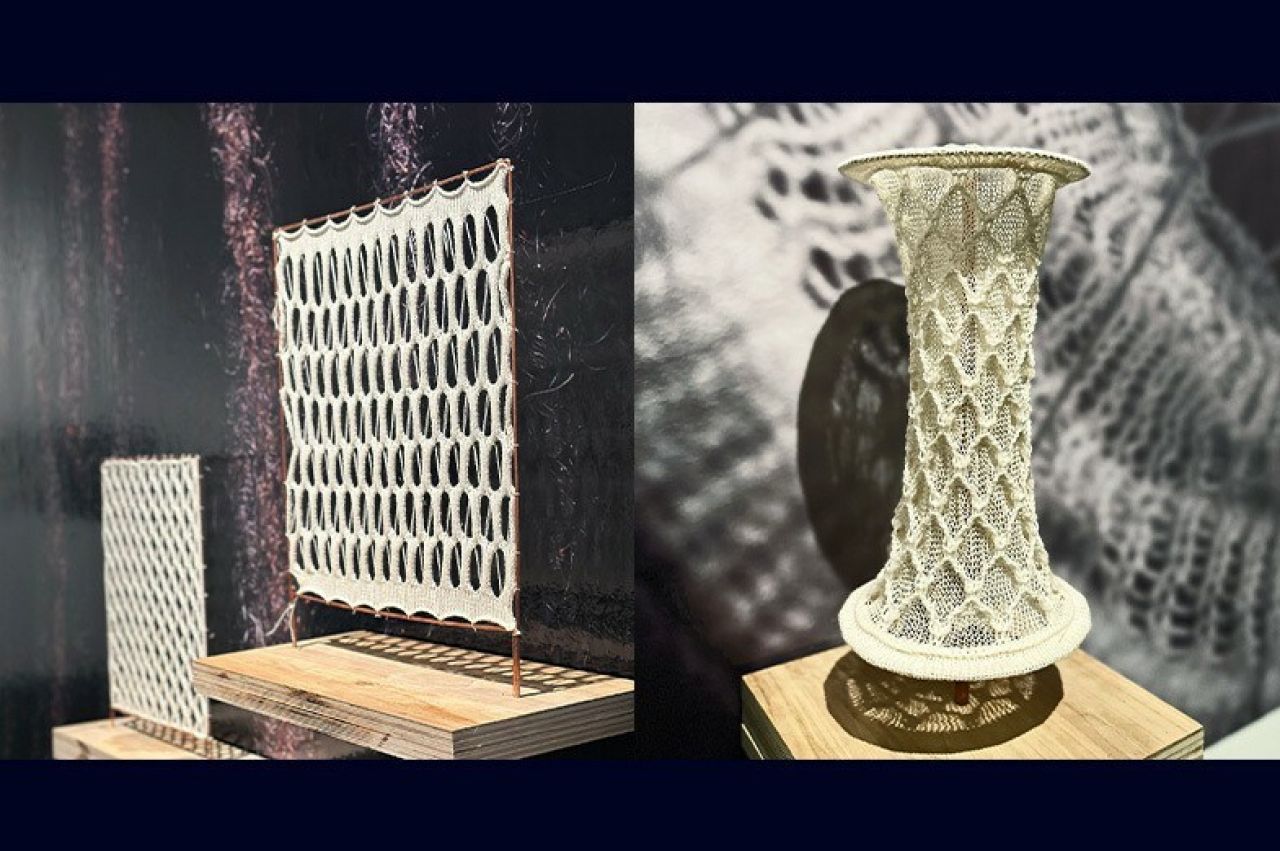February 06, 2023
Work from Computational Textiles Lab researchers on international display

UNIVERSITY PARK, Pa. — Projects developed by Felecia Davis, associate professor of architecture in the College of Arts and Architecture’s Stuckeman School, and student researchers in her Computational Textiles Lab (SOFTLAB) in the Stuckeman Center for Design Computing (SCDC) are featured in two exhibitions in different parts of the world.
The “Dreadlock Series,” a project developed by Davis’s team, is on display as part of the “Hair Salon: Black Hair as Architecture” exhibition at the University of Houston from Feb. 2 to Feb. 28. The exhibition will display art, design and architectural works inspired by Black hair and its unique material properties.
“The Hair Salon exhibition is important because it makes a space of conversation, discussion and activity,” Davis said. “The conversation we are hoping to cultivate is a conversation about Black culture, its relationship to technology and concepts of translation. We are interested in generative conversations abut Black culture and architectural design.”
Davis said she hopes the project offers space and time to dream new structures for Black life.
“The Penn State SOFTLAB team developed a version of the project that focused on one type of hair styling, that of locking or dreadlocks,” Davis said. “We looked at the etymology of the word ‘dreadlock’ and developed materials and small prototypes using a knitted, felted isocord of wool yarns.”
The “Dreadlock Series” is the result of a research project Davis embarked on as part of a team that was awarded the Fine Arts Project Grant from the Graham Foundation for Advanced Studies in 2021. The project was done in collaboration with Sheryl Tucker de Vazquez, architect and associate professor at the University of Houston; William D. Williams, architect and the Smith Visiting Professor at Rice University School of Architecture; and Marcella del Signore, architect and associate professor and director of the Master of Science in Architecture, Urban and Regional Design program at the New York Institute of Technology, School of Architecture and Design.
Tucker de Vazquez also curated the entire Hair Salon exhibition, which is on display in the Mashburn Gallery at the University of Houston’s Gerald D. Hines College of Architecture and Design.
Penn State students Ian Danner, a second-year art education graduate student, Aysan Jafarzadeh, a third-year master of architecture student, and Hiranshi Patel, a second-year master of architecture student, worked over the summer and during the fall semester on the “Dreadlock Series.”
According to the Graham Foundation, the project “draws from the rich culture and history of African Americans to imagine transformative built environments.”
“Black hair textures and styles are one of the most enduring signifiers of Black identity in the United States,” the Graham Foundation website states. “The process of braiding hair is translated into computer code that can be used to develop a martial or fabric that can create or enhance architectural spaces.”
The “Hair Salon” exhibition will travel to other schools and venues, including Penn State possibly in the fall of 2023, according to Davis. The exhibition will differ at locations to reflect the interests of each researcher or collaborator. The work done by SOFTLAB was supported by the 2021 College of Arts and Architecture Racial Justice and Democratic Practices grant as well as the SCDC.
A project titled “Patterning by Heat Responsive Tension Structures” by Davis and Delia Dumitrescu, director of the Smart Textiles Lab at the Swedish School of Textiles, is on display Feb. 3-11 at the Dhaka Art Summit in Dhaka, Bangladesh.The Dhaka Art Summit (DAS) Is an International, non-commercial research and exhibition platform for art and architecture related to South Asia, according to its website. DAS re-examines how people think about forms of art in both a regional and international context. The work on exhibit in Dhaka was supported by the SCDC.
According to Davis, her submission to the exhibition shows two tubes knitted together with two different kinds of yarns. The main takeaway from the submission, according to Davis, is a question: “How can we design lightweight textiles for use in architecture that can transform in response to their environment?”
“The first typology of material developed was pixelated, designed with yarn that melts at high temperature; accordingly, the fabric opens or breaks when it receives current,” Davis said. “The opening allows designers flexibility to experiment with see-through effects on the fabric, or to ‘write’ upon the fabric making apertures, collecting foreground and background through the qualities of the material.”
The second material in the display has been designed with yarn that shrinks into solid links in the fabric when it receives current, revealing an opaque patterning and closing parts of the textile off, thus transforming the material, according to Davis.
Davis said she first teamed up with Dumitrescu in 2011 at a workshop in Denmark when they were both doctoral students.
“We wanted to collaborate on something that experiments with the responsiveness of textiles and continued to develop this work with opening and closing yarns in the “Patterning by Heat” project,” Davis said.
Further information on the Hair Salon exhibition can be found on the University of Houston website. More information on the Dhaka Art Summit can be found on the exhibition website.
For more news from the Stuckeman School, follow us on Twitter @StuckemanNews.
